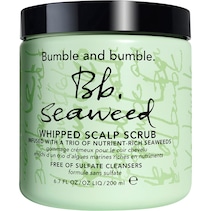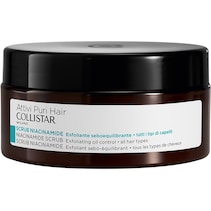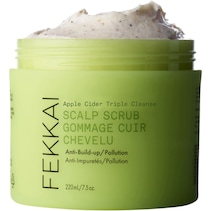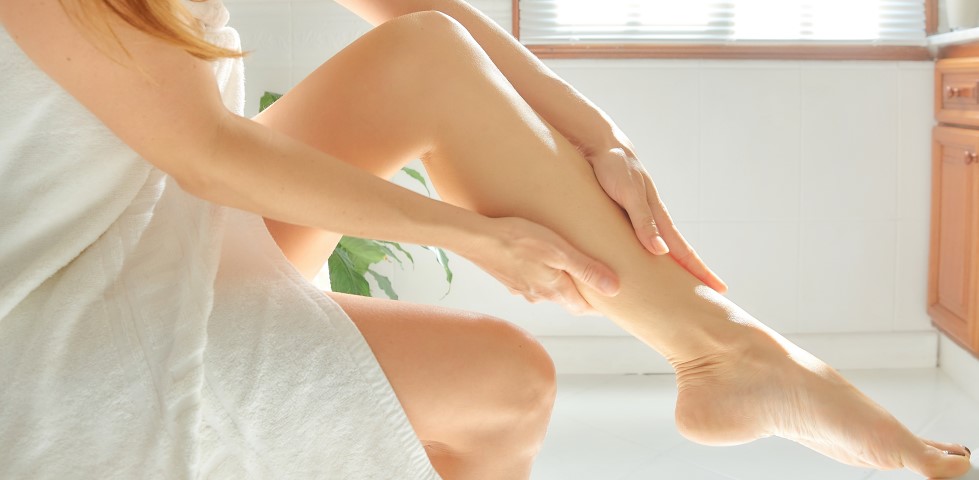
Scalp peel – strong hair with little effort
Want healthy hair and less dandruff? A scalp peel can be a real game changer when it comes to hair growth and a healthy appearance. Because only a clean scalp with good circulation can ensure healthy shine and suppleness of your hair in the long term. What exactly is a scalp peel and what do you need to look out for? We have the answers.
23 October 2024
Table of contents
Scrubs for the scalp
Scrubs for the scalp
What is a hair peel?
Peels for your body and face are no longer just a fancy treatment. Use them at least once a week to get rid of dead skin cells and impurities and leave your skin soft and clean. The scalp peel follows the same principle. Either mechanically with crystals or chemically with acids, they let you effectively remove styling residues, sebum and dirt. What remains is a clean scalp with optimal blood circulation that can breathe again and maintain optimal functionality.
Thanks to the scalp peel, the hair roots are better supplied with oxygen and other nutrients and can therefore ensure stronger hair growth. Premature hair loss can also be prevented with regular hair peels. Are you struggling with roots that get greasy quickly, dandruff and itching? Weekly scalp peels can provide relief here as well.
Advantages of a scalp peel
Scalp peels are easy to use and offer numerous benefits, including:
- Care products and nutrients can penetrate deeper into the scalp and optimise their effect.
- The roots look refreshed and show more volume.
- Regular scalp peels can provide lasting relief from itchiness.
- With optimal scalp care, the hair can grow back thicker and smoother.
Important:
Always match the type of scalp peel to your skin type. The best way to determine your skin type is to look at your facial skin. If you tend to have oily patches, your scalp is usually oily too. Dry facial skin produces dandruff more frequently on the head and impurities are usually found in both areas. So, did you find out what skin type you have? In the next section, we’ll show you the two types of hair peel and which one is right for you.
Chemical or mechanical: choosing the right peel for your scalp
Mechanical peels and scrubs for the scalp have generally been criticised for some time. For many people, they are too aggressive and can cause micro-injuries to the skin if used incorrectly. Many products also contain problematic ingredients that can enter the groundwater via the drain. If you want to be on the safe side here, you can easily make a mechanical peel for your scalp yourself. All you need is 2–3 tablespoons of almond oil, a tablespoon of granulated sugar and a few drops of essential oil.
Nevertheless: use sugar crystals and the like with caution and avoid vigorous rubbing. Even if it feels good at the time – the positive effects can quickly turn into the opposite. The better alternative: a chemical scalp peel. However, make sure you choose fragrance-free and mild formulations. This will prevent intolerance and skin irritation.
An AHA peel for the scalp
This chemical hair peel with alpha hydroxy acid (AHA) is ideal for you if your scalp is particularly dry or sensitive. Firstly, the large molecules do not penetrate as deeply, which is why the scalp is less irritated. Secondly, A dry scalp is often caused by poor sebum production, which can be regulated by water-soluble acids. For example, 8% glycolic acid or 5% lactic acid in an AHA peel for the scalp helps to alleviate dandruff.
A BHA peel for the scalp
Do your roots tend to become greasy quickly? Then you should use a hair peel with beta hydroxy acid (BHA). This is fat-soluble and its molecules are smaller, allowing the BHA peel to penetrate the scalp better and work deeper. Pay attention to the concentration here too: just 2% salicylic acid is completely sufficient to achieve a pore-deep result.
A PHA peel for the scalp
Polyhydroxy acid is the ideal option for a very sensitive scalp that reacts quickly and is also prone to dryness. These hair peels contain by far the largest molecules. This makes cleansing even gentler than with AHA peels for the scalp.
How to use a chemical scalp peel
No matter what type of scalp peel you have chosen: with these basic instructions, you’ll be able to get the full benefit of this simple hair treatment at home:
- Step 1: Moisten your scalp to make it easier for the acids to penetrate. Whether you wash your hair with a mild shampoo beforehand is purely a matter of judgement. If you use a lot of hairspray or gel, this is recommended in any case.
- Step 2: Apply your hair peel directly to the scalp, parting by parting. Only use a few drops; this is completely sufficient.
- Step 3: Gently massage your scalp with your fingertips. Avoid rubbing vigorously or using your fingernails to prevent injury. Alternatively, there are also special scalp brushes with extra soft rubber nubs. Take your time with this step of using a scalp peel and be careful not to get any product in your eyes.
- Step 4: Warm, clear water is all you need to rinse off the scalp peel residue and all impurities.
- Step 5: Avoid using a hairdryer or curling iron after applying the peel. Instead, allow your scalp to dry slowly in the air.
After the scalp peel, you can also use special care serums or masks for the scalp. Again, consider your hair type to select the ideal products for you and your needs.
Scalp peel: FAQs
Takeaway
Scalp peels are not a pointless hype, but a recommended treatment for healthy hair and strong growth. They reliably and effectively remove all impurities that accumulate over time. Use AHA, BHA or PHA peels for the scalp instead of mechanical scrubs to avoid injuries. Less is more: 1–2 times a week is completely sufficient for the hair peel to take effect.











